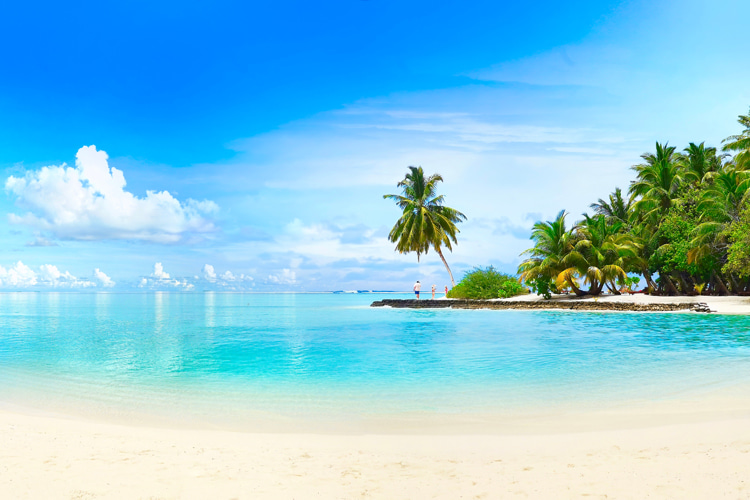The Indian Ocean takes up about one-fifth of the world's ocean area.
It is nearly six times larger than the United States and holds about 63.3 million cubic miles (264 million cubic kilometers) of water.
Nevertheless, it is the smallest and youngest of the three main oceans (Pacific, Atlantic, and Indian) and the most complex.
Deciding its exact boundaries is tricky and still needs to be settled.
For instance, there is no universal agreement on the southern boundary of the Indian Ocean.
So, what's so special about this warm water body that is home to the Bay of Bengal, the world's largest bay?
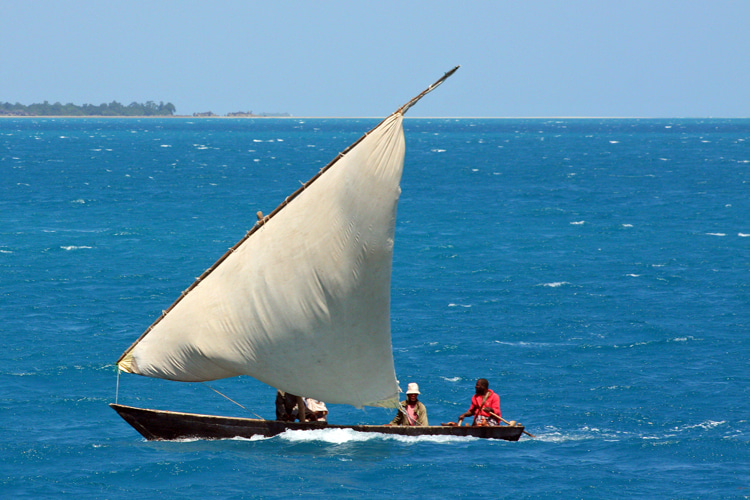
Size and Depth
The Indian Ocean spans over 6,200 miles (10,000 kilometers) from the southern tips of Africa to Australia and covers about 27,243,000 square miles (70,560,000 square kilometers), excluding its marginal seas.
The average depth is 12,274 feet (3,741 meters), with the deepest point at 24,442 feet (7,450 meters) in the Sunda Deep of the Java Trench near Indonesia.
Geology and Formation
The Indian Ocean was formed from the breakup of the supercontinent Gondwana about 180 million years ago.
The Indian subcontinent moved northeast and collided with Eurasia about 50 million years ago, Africa moved west, and Australia separated from Antarctica about 53 million years ago.
The water body already had its present shape 36 million years ago.
Although it began forming 140 million years ago, most of the ocean basin is less than 80 million years old.
Curiously, the Indian Ocean has the fewest trenches of all the major oceans.
The Java Trench, which is narrow and volcanic, stretches over 2,800 miles (4,500 km) from southwest of Java northward as the Sunda Trench past Sumatra, extending along the Andaman and Nicobar Islands.
It is also home to the Ninetyeast Ridge, the world's longest and straightest earthquake-free ridge.
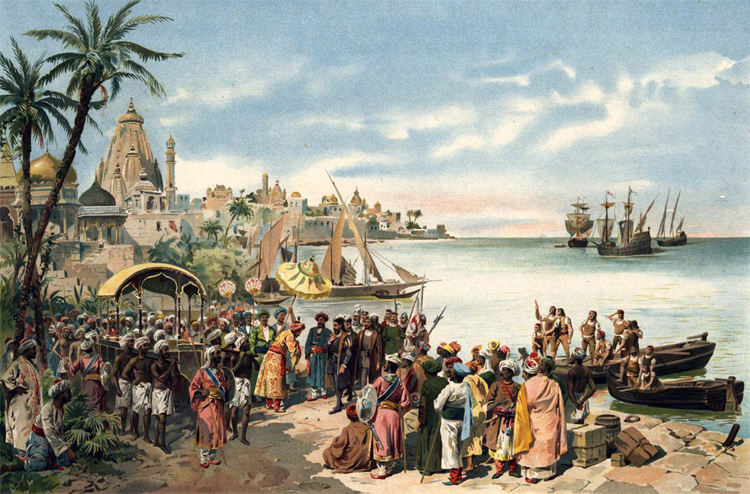
History and Exploration
Evidence shows that Egyptians explored this ocean around 2300 BCE, sending expeditions to the "Land of Punt" on the Somali coast.
These expeditions might have started even earlier, around 2900 BCE, and continued frequently until about 2200 BCE.
No expeditions to Punt are recorded between 2200 and 2100 BCE, but they resumed during the 11th dynasty (2081-1938 BCE) and continued until the 20th dynasty (1190-1075 BCE).
Portuguese navigator Vasco da Gama sailed around the Cape of Good Hope in 1497, becoming the first European to reach India by sea.
The Dutch, English, and French followed the Portuguese.
The designation "Indian Ocean" has been used since at least 1515 and was named after India. It was previously called the "Eastern Ocean," a term used until the mid-18th century.
It was known as the Sea of Abyssinia or the Sea of Zanj in the medieval years.
In Sanskrit, it's "Ratnakara" or "mine of jewels," while in Hindi, it is "Hind Mahāsāgar" or "Ocean of India."
Islands
The rivers flowing into the Indian Ocean deposit more suspended sediments than any other major ocean, with nearly half coming from the Indian subcontinent alone.
Forty percent of the ocean's sediment is in the Indus and Ganges fans.
The Bay of Bengal contributes more than half (710 cubic miles or 2,950 cubic kilometers) of the runoff water to the "Eastern Ocean."
It also has fewer islands compared to the Atlantic and Pacific.
Madagascar, the Maldives, Seychelles, Socotra, and Sri Lanka are pieces of continents.
Other islands like Christmas, Cocos, Farquhar, Prince Edward, Saint-Paul, Amsterdam, Amirante, Andaman and Nicobar, Chagos, Crozet, Kerguelen, Sunda groups, Comoros, Lakshadweep, Mauritius, and Réunion are volcanic.
The Andamans and Sundas are island arc-trench subduction systems with a trench on the oceanic side of the arc.
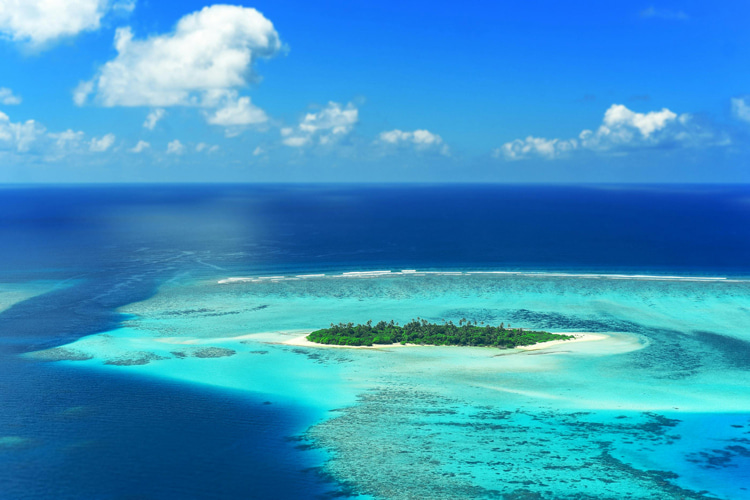
Climate and Weather
The "Ocean of India" could be divided into four main climate zones: monsoon, trade winds, subtropical and temperate, and subantarctic and Antarctic.
In summer, warm land masses draw moist air from the ocean, causing heavy rain. In winter, this process reverses, resulting in dry conditions.
About 80 percent of India's annual rainfall occurs in the summer, and many civilizations have collapsed in the past when the monsoon failed.
Ocean Characteristics
The salinity of the surface waters varies between 32 and 37 parts per thousand, with significant local differences.
Tidal ranges vary widely across it and its nearby seas.
The Indian Ocean is the planet's warmest ocean, with temperatures ranging from 66 to 82 °F (19 to 30 °C) in the upper layer.
Between 1901 and 2012, it got even warmer, with an increase of 34.2 °F (1.2 °C).
In 2010, a large floating garbage patch covering at least five million square kilometers (1.9 million square miles) was discovered.
Marine Life and Biodiversity
Of Earth's 36 biodiversity hotspots, nine (25 percent) are on the edges of the Indian Ocean.
Among tropical oceans, its western region has one of the largest concentrations of phytoplankton blooms in summer due to strong monsoon winds.
Below the surface layers, especially in the north, the water has very low oxygen levels, which limits the growth of phytoplankton and the number of marine animals.
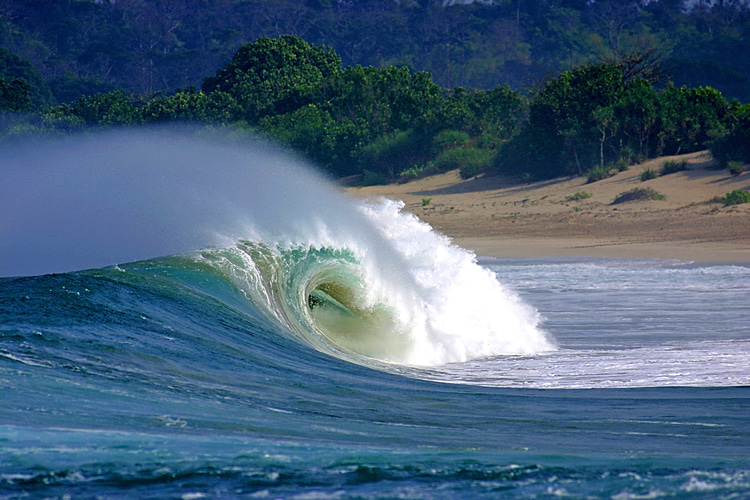
Resources
Petroleum is by far the most valuable mineral resource and the Persian Gulf is the largest oil-producing area in the world.
The "Eastern Ocean" fisheries are the third most important in the world, accounting for 15.5 percent of the global catch in 2020.
Important species include tuna, small pelagic fish, and shrimp.
Countries and Population
Australia, Indonesia, and India have the longest shorelines and exclusive economic zones along the Indian Ocean.
The continental shelf makes up 15 percent of the Indian Ocean.
More than two billion people live in countries bordering the Indian Ocean, compared to 1.7 billion for the Atlantic and 2.7 billion for the Pacific (some countries border more than one ocean).
Literature
"One Thousand and One Nights" is a classic collection of Middle Eastern folk tales featuring Sinbad the Merchant, a character who travels extensively in the oceanic region.
It is considered one of the earliest and most influential works of "Ratnakara" literature.
"The Lusiads," by Luís de Camões, is an epic Portuguese poem written in the 16th century that chronicles Vasco da Gama's voyages of exploration to India and establishing the Portuguese empire in the Afro-Asian region.
Words by Luís MP | Founder of SurferToday.com
